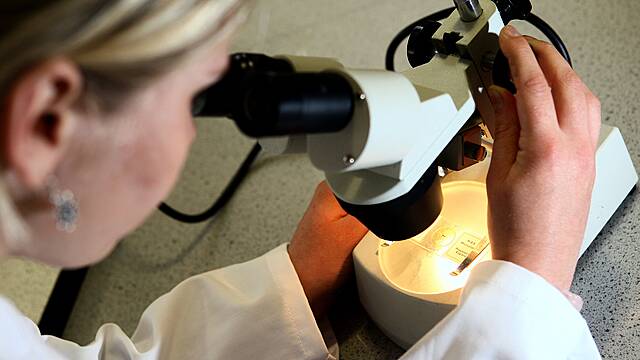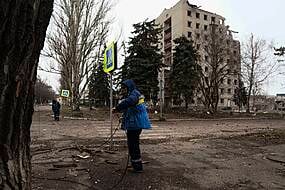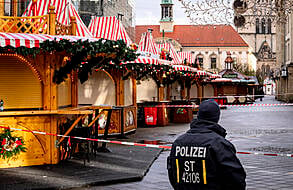The findings could bring scientists one step closer to developing what they call an evolutionary rule book that helps predict and block cancer’s next move.
The genetic make-up of a tumour changes over time – the result of mistakes made when cancerous cells replicate their DNA to create a copy which is needed for the cell to divide.
In the past, researchers have shown that patients whose tumours have more diverse genetic mutations are less likely to survive.
They are now working to understand why these mutations occur and if there is a pattern or order to them.
The presence of common changes supports the theory that there are a number of genetic pathways through which tumours must evolve
In the new study, researchers at the Francis Crick Institute and the UCL Cancer Institute found that changes in the chromosomes of cancer cells happen frequently and throughout the development of a tumour, and changes which help it survive and grow are more likely to take hold.
Thomas Watkins, lead author and PhD student in the Cancer Evolution and Genome Instability Laboratory at the Crick, said: “In a tumour there are lots of genetic changes taking place.
“The fact we saw similar chromosomal changes take hold independently within a tumour in separate subclones suggests these changes are important for the tumour and might lead to subclones with them ‘out-competing’ other subclones without them.”
Charles Swanton, senior group leader at the Crick and UCL, Cancer Research UK’s chief clinician and consultant oncologist at UCLH, says: “The presence of common changes supports the theory that there are a number of genetic pathways through which tumours must evolve.
“Identifying these would move us a step closer to writing cancer’s evolutionary rule book.”
In collaboration with the Max Delbruck Centre for Molecular Medicine in Germany, the team developed a technique that analyses multiple samples from a single tumour to identify chromosomal changes in 1,421 tumour samples taken from 394 patients and across 22 types of tumours.
When looking at the nature and timing of these chromosomal changes, they found that often similar chromosomal changes had taken place in different subclones within a tumour from the same patient.
These subclones are different populations or groups of cells within the same tumour.
This evidence of subclones evolving in parallel was observed in samples taken from 37% of patients (146 patients).
Published in Nature, the study identified chromosomal changes that occur across different tumour types at particular stages of cancer evolution, including changes that might help a tumour to evade the immune system or continue to grow despite a lack of oxygen.
Researchers also saw how some changes were common at the beginning of a cancer’s development, while others were more frequent later on, after it has spread to other parts of the body.
And there were certain events that acted as a catalyst for mutations.
Nicholas McGranahan, group leader of the Cancer Genome Evolution Group at the UCL Cancer Institute, said: “There was a sense of order in the mutations we identified, with different mutations likely to appear at different points.
“So these changes, which may seem like chromosomal chaos, could actually be something we could predict.
“Of course, if you could predict them, this opens the door to scientists and doctors developing new treatments, or roadblocks, which could block these evolutionary pathways.”







